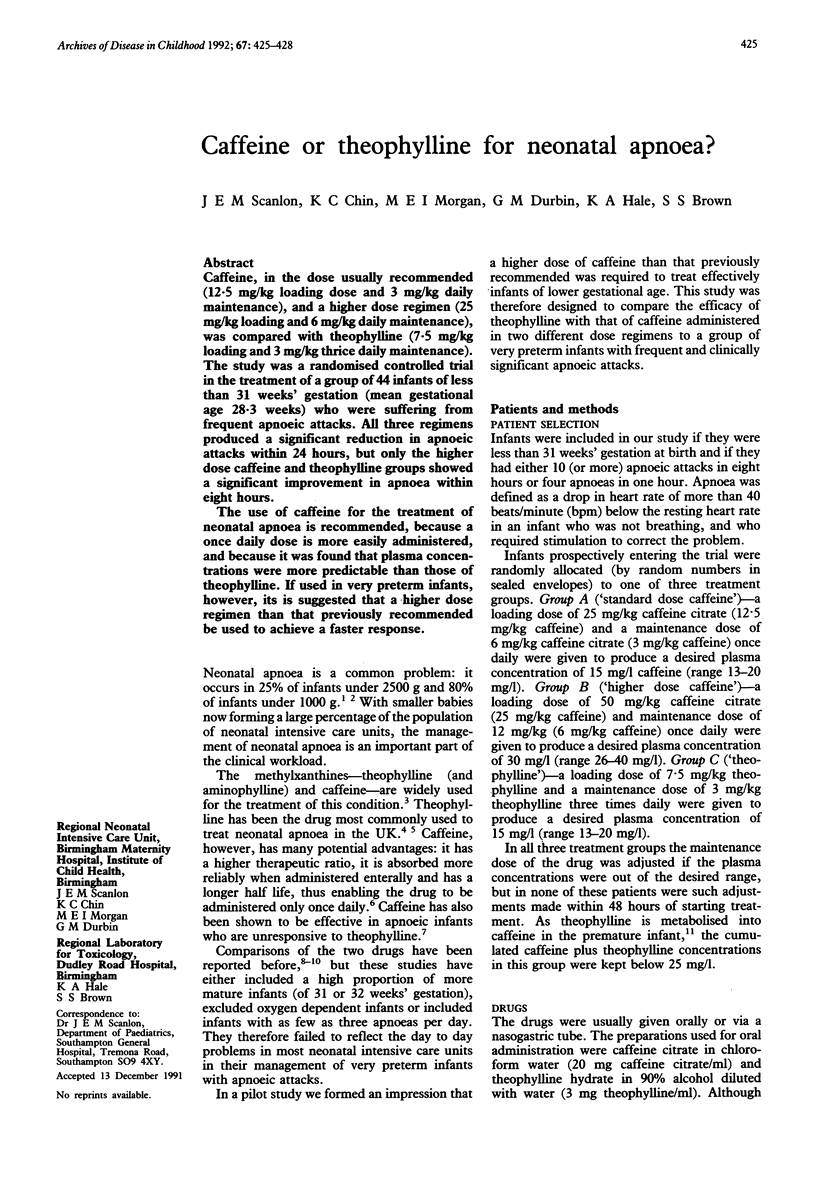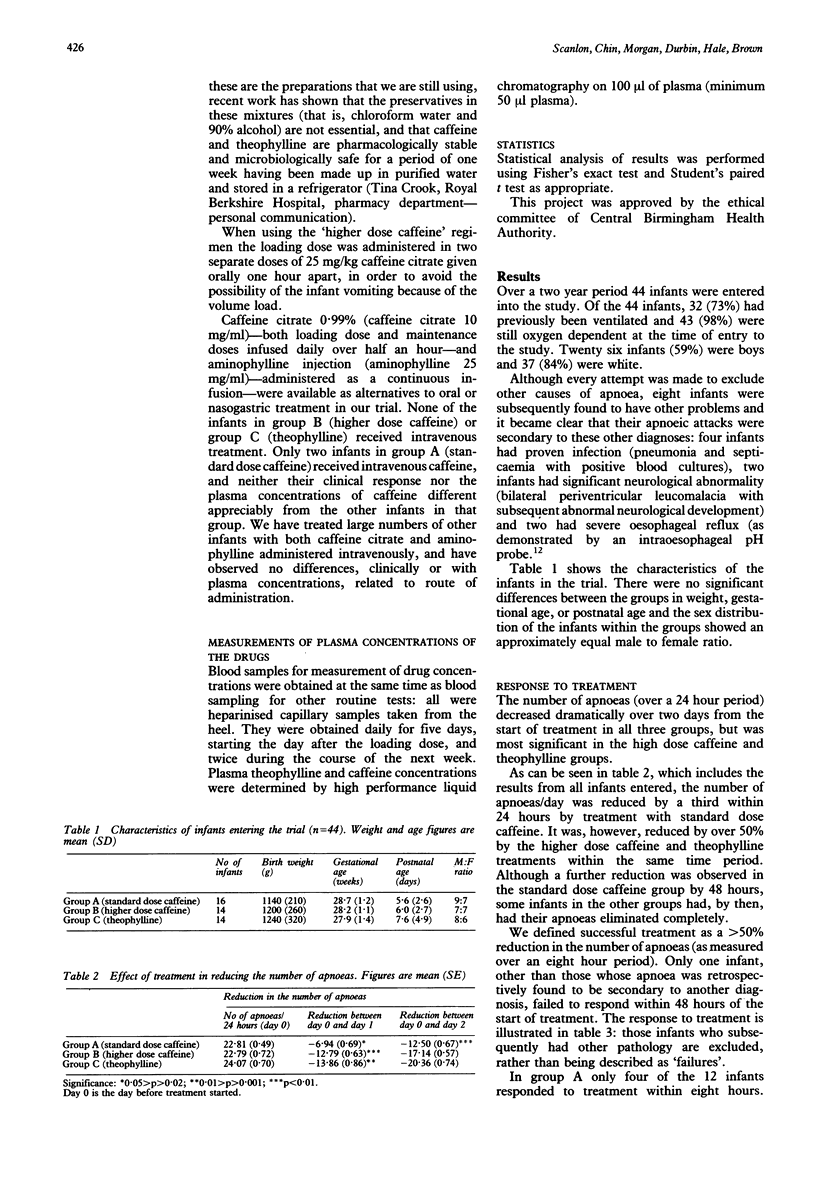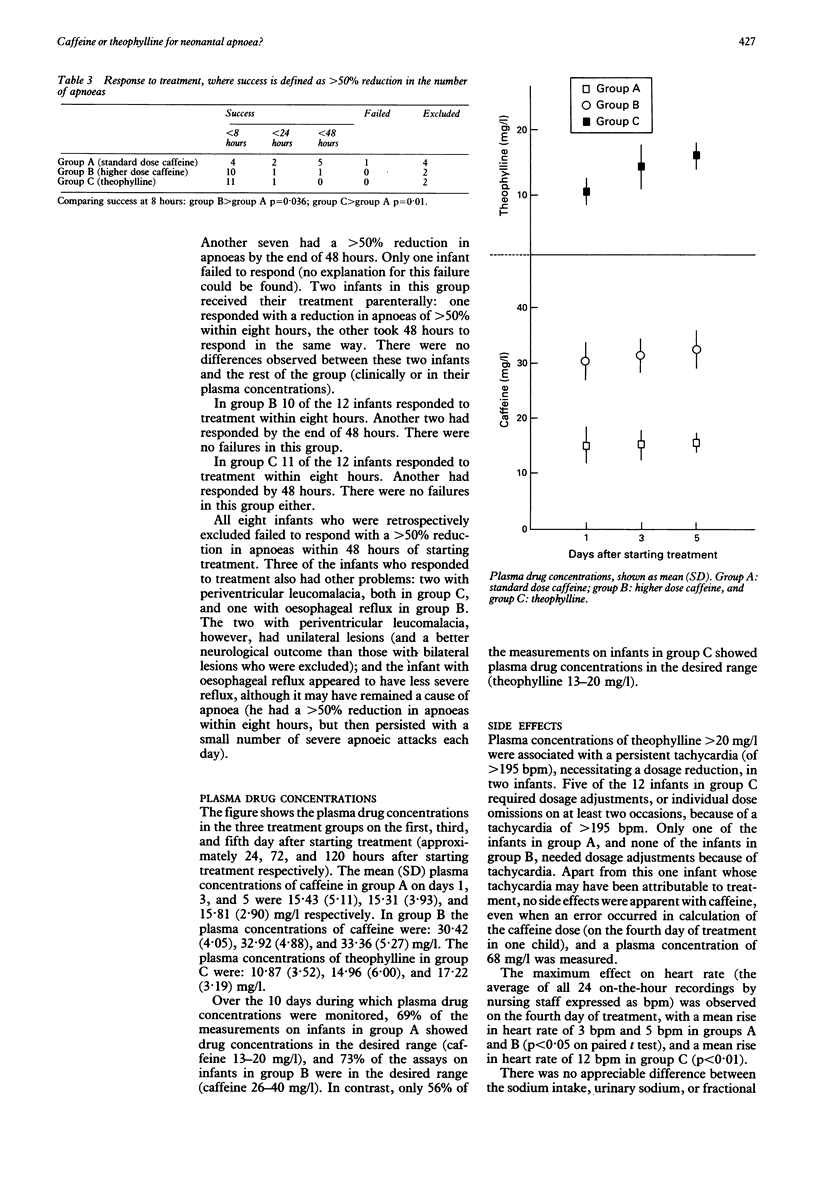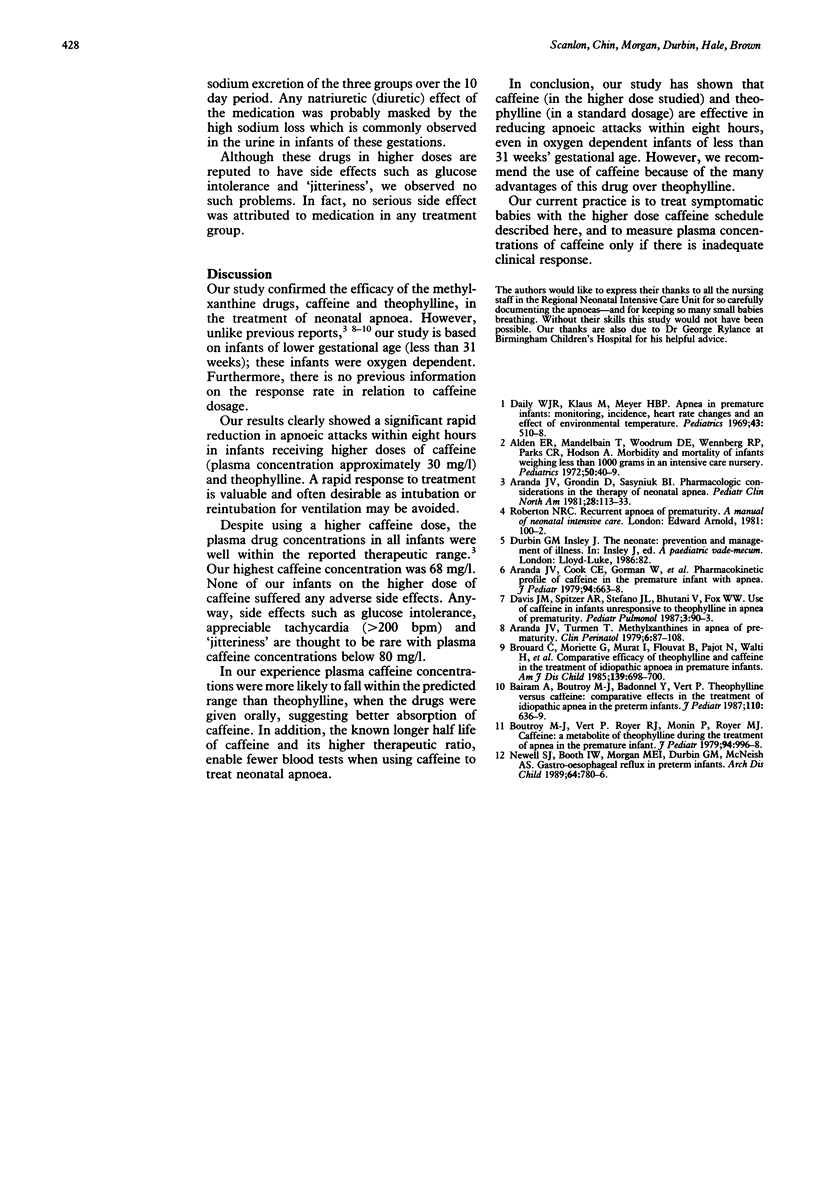Abstract
Caffeine, in the dose usually recommended (12.5 mg/kg loading dose and 3 mg/kg daily maintenance), and a higher dose regimen (25 mg/kg loading and 6 mg/kg daily maintenance), was compared with theophylline (7.5 mg/kg loading and 3 mg/kg thrice daily maintenance). The study was a randomised controlled trial in the treatment of a group of 44 infants of less than 31 weeks' gestation (mean gestational age 28.3 weeks) who were suffering from frequent apnoeic attacks. All three regimens produced a significant reduction in apnoeic attacks within 24 hours, but only the higher dose caffeine and theophylline groups showed a significant improvement in apnoea within eight hours. The use of caffeine for the treatment of neonatal apnoea is recommended, because a once daily dose is more easily administered, and because it was found that plasma concentrations were more predictable than those of theophylline. If used in very preterm infants, however, its is suggested that a higher dose regimen than that previously recommended be used to achieve a faster response.
Full text
PDF



Selected References
These references are in PubMed. This may not be the complete list of references from this article.
- Alden E. R., Mandelkorn T., Woodrum D. E., Wennberg R. P., Parks C. R., Hodson W. A. Morbidity and mortality of infants weighing less than 1,000 grams in an intensive care nursery. Pediatrics. 1972 Jul;50(1):40–49. [PubMed] [Google Scholar]
- Aranda J. V., Cook C. E., Gorman W., Collinge J. M., Loughnan P. M., Outerbridge E. W., Aldridge A., Neims A. H. Pharmacokinetic profile of caffeine in the premature newborn infant with apnea. J Pediatr. 1979 Apr;94(4):663–668. doi: 10.1016/s0022-3476(79)80047-5. [DOI] [PubMed] [Google Scholar]
- Aranda J. V., Grondin D., Sasyniuk B. I. Pharmacologic considerations in the therapy of neonatal apnea. Pediatr Clin North Am. 1981 Feb;28(1):113–133. doi: 10.1016/s0031-3955(16)33965-7. [DOI] [PubMed] [Google Scholar]
- Aranda J. V., Turmen T. Methylxanthines in apnea of prematurity. Clin Perinatol. 1979 Mar;6(1):87–108. [PubMed] [Google Scholar]
- Bairam A., Boutroy M. J., Badonnel Y., Vert P. Theophylline versus caffeine: comparative effects in treatment of idiopathic apnea in the preterm infant. J Pediatr. 1987 Apr;110(4):636–639. doi: 10.1016/s0022-3476(87)80569-3. [DOI] [PubMed] [Google Scholar]
- Boutroy M. J., Vert P., Royer R. J., Monin P., Royer-Morrot M. J. Caffeine, a metabolite of theophylline during the treatment of apnea in the premature infant. J Pediatr. 1979 Jun;94(6):996–998. doi: 10.1016/s0022-3476(79)80248-6. [DOI] [PubMed] [Google Scholar]
- Brouard C., Moriette G., Murat I., Flouvat B., Pajot N., Walti H., de Gamarra E., Relier J. P. Comparative efficacy of theophylline and caffeine in the treatment of idiopathic apnea in premature infants. Am J Dis Child. 1985 Jul;139(7):698–700. doi: 10.1001/archpedi.1985.02140090060028. [DOI] [PubMed] [Google Scholar]
- Daily W. J., Klaus M., Meyer H. B. Apnea in premature infants: monitoring, incidence, heart rate changes, and an effect of environmental temperature. Pediatrics. 1969 Apr;43(4):510–518. [PubMed] [Google Scholar]
- Davis J. M., Spitzer A. R., Stefano J. L., Bhutani V., Fox W. W. Use of caffeine in infants unresponsive to theophylline in apnea of prematurity. Pediatr Pulmonol. 1987 Mar-Apr;3(2):90–93. doi: 10.1002/ppul.1950030210. [DOI] [PubMed] [Google Scholar]
- Newell S. J., Booth I. W., Morgan M. E., Durbin G. M., McNeish A. S. Gastro-oesophageal reflux in preterm infants. Arch Dis Child. 1989 Jun;64(6):780–786. doi: 10.1136/adc.64.6.780. [DOI] [PMC free article] [PubMed] [Google Scholar]


